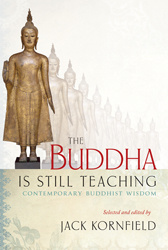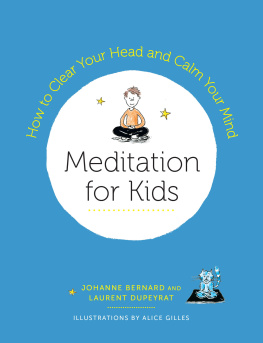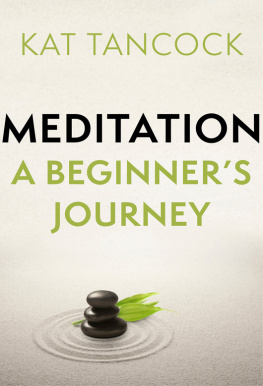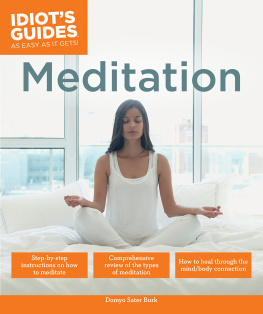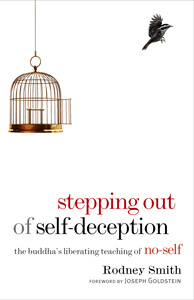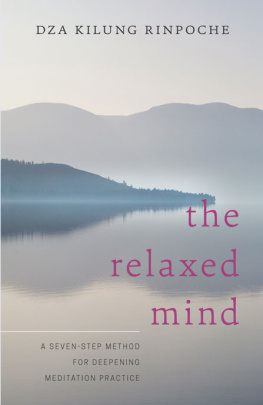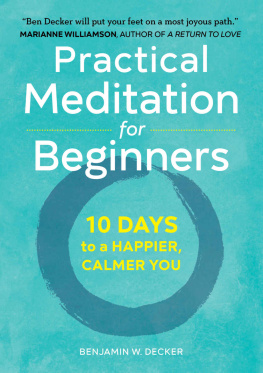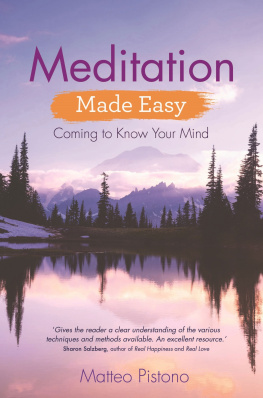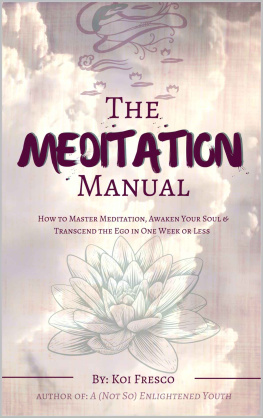ONE
The Ancient Art of Meditation
MEDITATION FOR BEGINNERS offers the central training and teachings found in the best Buddhist monasteries translated for Western society. In Meditation for Beginners, you will find some of the simplest and most universal of these practices of meditationin particular, the practices of mindfulness and lovingkindness. An integral part of this instruction will be the six fundamental meditation practices included on the enclosed CD. These guided meditations were recorded at actual meditation retreats and are designed to give you a direct experience of the material presented in this book.
The point of these teachings has nothing to do with becoming a Buddhist, or learning any Eastern ceremonies or rituals or bowing. What is important is that you learn how to work with meditation in order to find benefits from it in your life. When we take time to quiet ourselves, we can all sense that our lives could be lived with greater compassion and greater wakefulness. To meditate is to support this inner potential and allow it to come forth into our lives.
There are many good forms of meditation practice. A good meditation practice is any one that develops awareness or mindfulness of our body and our senses, of our mind and heart. It does not really matter which kind you choose. What is more important is that after you choose a form of meditation you stay with it, and practice it regularly. Meditation takes discipline, just like learning how to play the piano. If you want to learn how to play the piano, it takes more than just a few minutes a day, once in a while, here and there. If you really want to learn any important skillwhether it is playing the piano or meditationit grows with perseverance, patience, and systematic training.
So pick a type of meditation that appeals to you and practice it. Work with it every day, and work with a teacher if you can, or find circumstances where you can sit together with other people. In the process of practicing regularly, you will begin to develop your capacity to open to the present moment. You will begin to develop patience and compassion when you sit regularly, and you will open to everything that is here.
Meditation for Beginners will present the most important basic exercises for mindfulness meditation, also called vipassana practice, the heart of Buddhist meditation. Vipassana (a Pali word meaning to see things as they really are) is the most widely practiced form of meditation in southeast Asia and is central to all Buddhist traditions. This practice emphasizes mindful attention, developing an immediate awareness of ones experience in all spheres of activity.
The meditations in Meditation for Beginners are designed to help you shine the light of mindfulness on every aspect of your daily experienceand to show you how to extend the healing power of lovingkindness to yourself and others. Mindfulness practice is also called insight meditation. It does not seek to focus attention on a meditative image of Buddha, or a deity, or a light, or a candle, or sacred words. Instead, through mindfulness we discover a way to develop a stillness in the midst of activity. Then, even the most mundane, repetitive experiencessuch as eating, walking, or answering the phonecan be drawn into the field of meditative awareness, included in the practice of mindfulness. In this way, our meditation is not an exercise that we do every once in a while, but rather a way of being that we can carry with us every moment of our days.
Mindfulness helps train us to be more present and alive for whatever we meet to develop what Alan Watts describes as the art of living: The art of living ... is neither careless drifting on the one hand nor fearful clinging to the past ... on the other. It consists in being completely sensitive to each moment, in regarding it as utterly new and unique, in having the mind open and wholly receptive.
To begin to meditate is to look into our lives with interest and kindness and discover how to be wakeful and free. We have so many ideas and beliefs about ourselves. We tell ourselves stories about what we want and who we are, smart or kind. Often these are the unexamined and limited ideas of others that we have internalized and then gone on to live out. To meditate is to discover new possibilities, to awaken the capacity that each of us has to live more wisely, more lovingly, more compassionately, and more fully.
TWO
Why Meditate?
HERE IS A story told about the Buddha shortly after he was enlightened. As he was walking down the dusty road he met a traveler who saw him as a handsome yogi exuding a remarkable energy. The traveler asked him, You seem very special. What are you? Are you some kind of an angel or deva? You seem unhuman. No, he said. Well, are you some kind of god then? No, he said. Well, are you some kind of wizard or magician? No, he replied. Well, are you a man? No. Then what are you? At this the Buddha answered, I am awake. In those three wordsI am awakehe gave the whole of Buddhist teachings. The word buddha means one who is awake. To be a buddha is to be one who has awakened to the nature of life and death, and who has awakened and freed ones compassion in the midst of this world.
The practice of meditation does not ask us to become a Buddhist or a meditator or a spiritual person. It invites us to fulfill the capacity we each have as humans to awaken. The skill of becoming more mindful, and more present, and more compassionate, and more awake is something we may learn sitting on a meditation cushion, but this capacity for awareness helps in computer programming, playing tennis, lovemaking, or walking by the ocean and listening to life around you. In fact, to awaken, to be really present, is the central art in all other arts.
What is that which we can awaken to? We awaken to what Buddhists call the dharma. Dharma is the Sanskrit and Pali word that refers to the universal truths: to the laws of the universe and the teachings that describe it. In this sense, finding the dharma is quite immediate. It is the wisdom that is always present to be discovered.
It is different than waiting for God to come down to us in a cloud of glory, or a big spiritual enlightenment, or a wonderful, otherworldly experience. The dharma of wisdom, what we can awaken to, is the truth that is right where we are when we let go of fantasies and memories and come into the reality of the present. When we do that and pay careful attention, we start to see the characteristics of the dharma in the very life in which we live.
One of the first characteristics of the dharma that shows itself in meditation is impermanence and uncertainty. Thus shall you think of this fleeting world, it says in one Buddhist sutra. A star at dawn, a bubble in a stream, a flash of lightning in a summer cloud, an echo, a rainbow, a phantom, and a dream. The more quietly you sit, the more closely you observe, the more you realize that everything you can see is in a state of change. Ordinarily, everything we experience seems solid, including our personality, the world around us, our emotions, and the thoughts in our mind. It is as if we are watching a movie; we can get so caught up in the story until it seems real, even though it is actually made of light flickering on a screen. And yet if you focus very carefully on what you are seeing, it is possible to see that the film is actually a series of still pictures, one frame after another. One appears, and then there is a slight gap, and then the next one appears.



